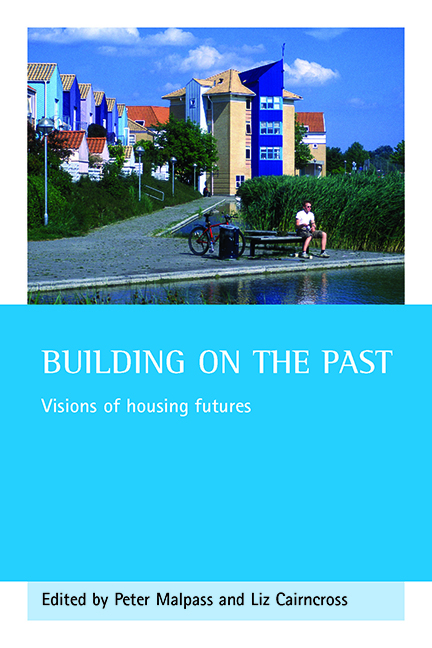Book contents
- Frontmatter
- Dedication
- Contents
- List of tables, figures and photographs
- Foreword
- Acknowledgements
- List of contributors
- one Introduction
- two Moving with the times: changing frameworks for housing research and policy
- three A new vision for UK housing?
- four Housing demand, supply and the geography of inequality
- five Understanding the drivers of housing market change in Britain’s postindustrial cities
- six Affordability comes of age
- seven Mob mentality: the threat to community sustainability from the search for safety
- eight Housing and the ageing population
- nine Tenant futures: the future of tenants in social housing
- ten Democracy and development
- eleven Conclusion
- Index
- Also available from The Policy Press
three - A new vision for UK housing?
Published online by Cambridge University Press: 15 January 2022
- Frontmatter
- Dedication
- Contents
- List of tables, figures and photographs
- Foreword
- Acknowledgements
- List of contributors
- one Introduction
- two Moving with the times: changing frameworks for housing research and policy
- three A new vision for UK housing?
- four Housing demand, supply and the geography of inequality
- five Understanding the drivers of housing market change in Britain’s postindustrial cities
- six Affordability comes of age
- seven Mob mentality: the threat to community sustainability from the search for safety
- eight Housing and the ageing population
- nine Tenant futures: the future of tenants in social housing
- ten Democracy and development
- eleven Conclusion
- Index
- Also available from The Policy Press
Summary
“Initiatives for housing and regeneration? This government has more visions than Mother Theresa and more pilots than British Airways.” (Professor Alan McGregor, University of Glasgow)
This chapter considers the government's twin visions of ‘sustainable new communities’ and ‘neighbourhood renewal’. It notes the economic, social and environmental drivers for increasing housing supply within sustainable communities, and it touches on the importance for northern urban areas of the housing market renewal initiatives. It concludes that these twin approaches to easing housing problems are justified by the evidence, but that the desired outcomes will be hard to achieve.
The chapter notes how political factors moderate the prospects for progress, and how delivery of these housing visions will also be difficult if underlying truths about land, about the costs of implementation and about dependency on the private sector are not faced. In particular, additional resources will be needed to acquire land and boost the supply of subsidised housing and this is best done through regulated, non-profit bodies where the subsidies are locked in for public benefit in perpetuity. The medicine is fine, but the dose is too weak, and it needs to be administered by people with social goals.
Economic drivers
The report commissioned by the Chancellor of the Exchequer from Kate Barker of the Bank of England spelt out the economic drivers for housing to move up the political agenda (Barker, 2004). If supply and demand get out of kilter, and the market does not correct that imbalance, economic consequences follow. Competitive success and a global economy depend on a nation's ability to attract and retain mobile, talented people: if such people are deterred from contributing to the UK economy because of shortages of accommodation – at all levels of society – competitiveness will suffer. London may stake a valid claim as the world's capital, and the prosperity it generates from its international business makes us the fourth strongest economy in the world, but if there is insufficient satisfactory housing then the workforce – whether they are bankers or cleaners – will go elsewhere, thus threatening the world position of the UK.
Housing shortages reduce the mobility of labour and deny public and private sectors the workers they need. Shortages lead to housing costs absorbing disproportionate levels of earnings, distorting other parts of the economy. They lead to long-distance commuting that is both wasteful and costly.
- Type
- Chapter
- Information
- Building on the PastVisions of Housing Futures, pp. 51 - 72Publisher: Bristol University PressPrint publication year: 2006

